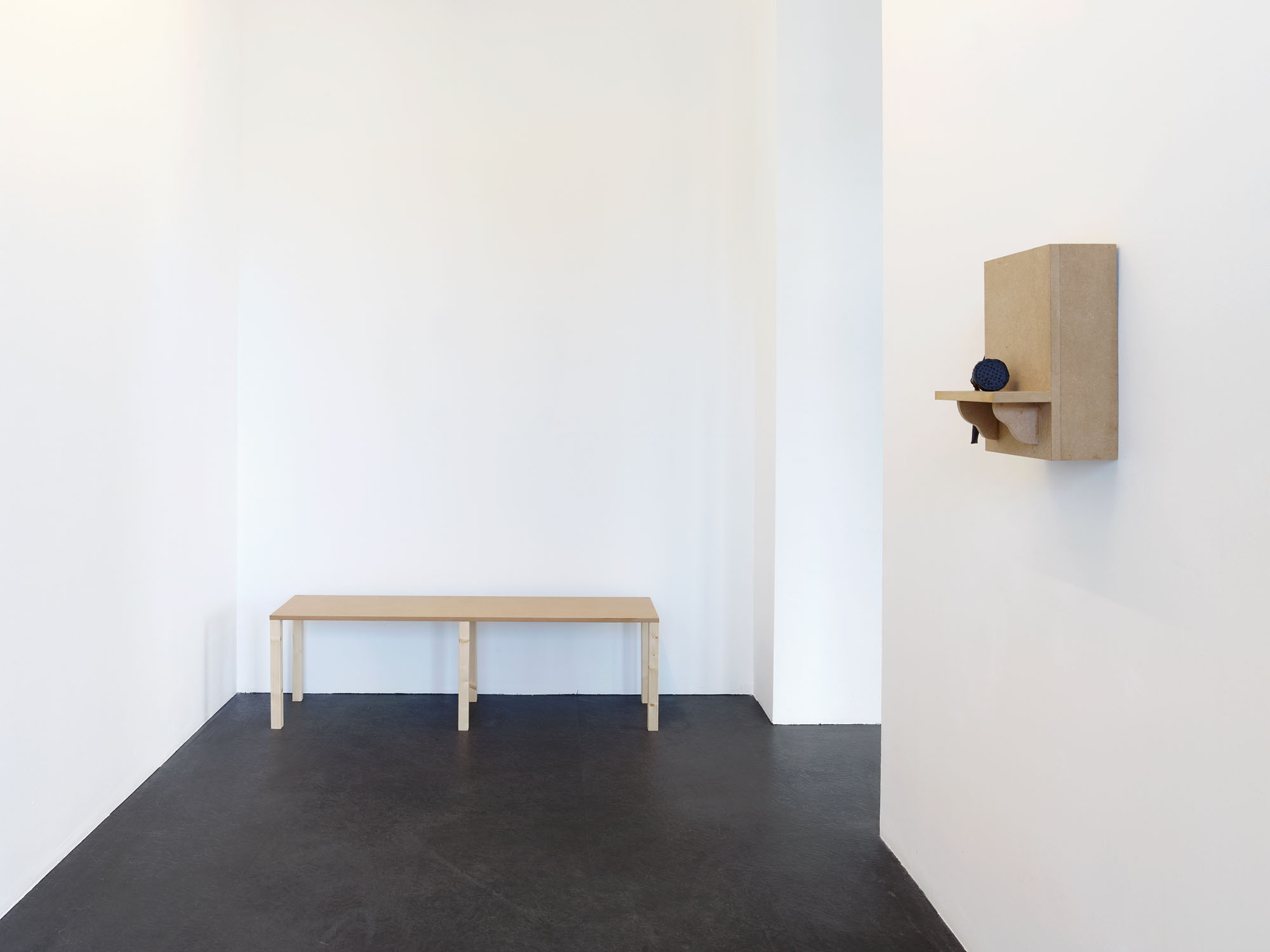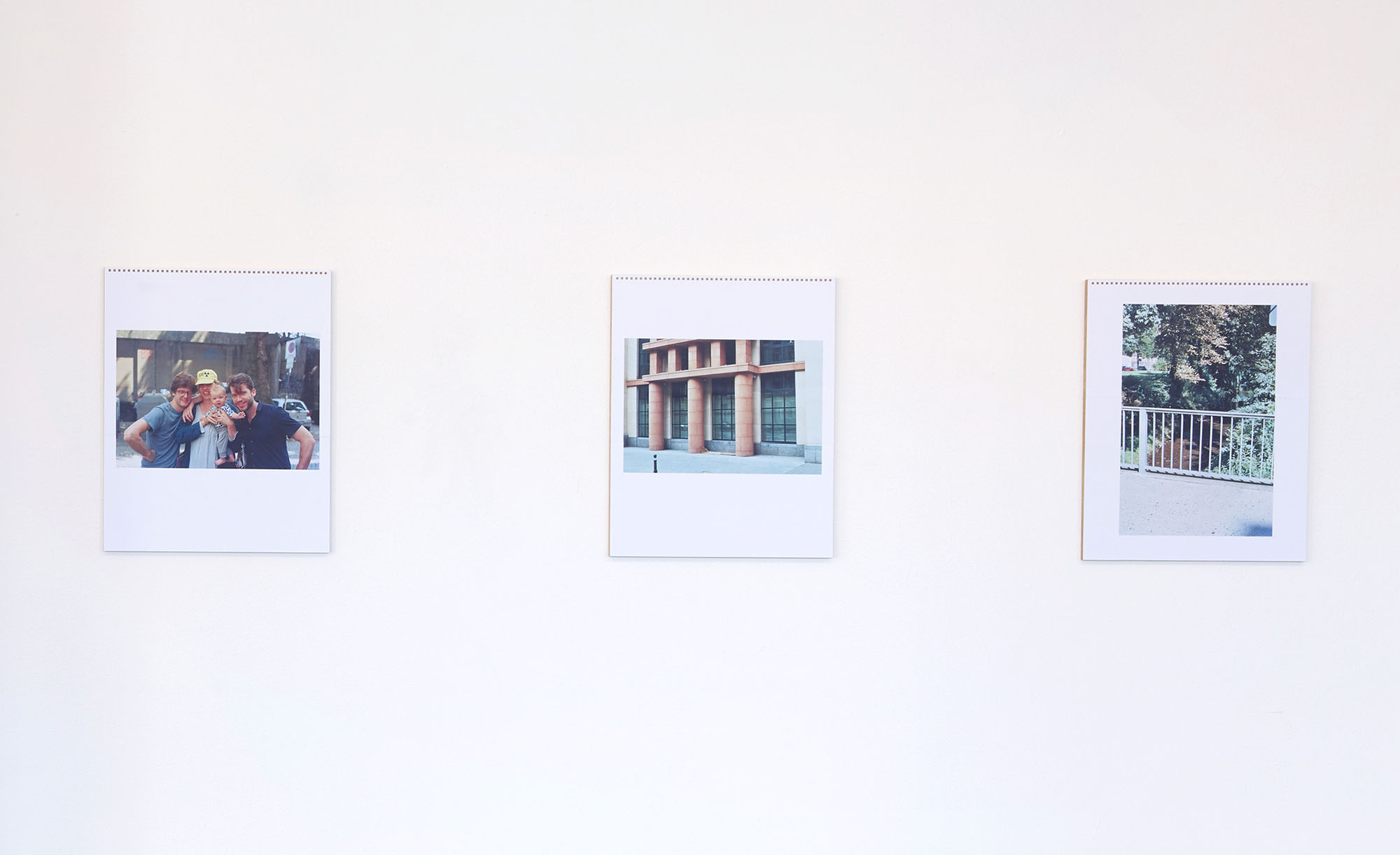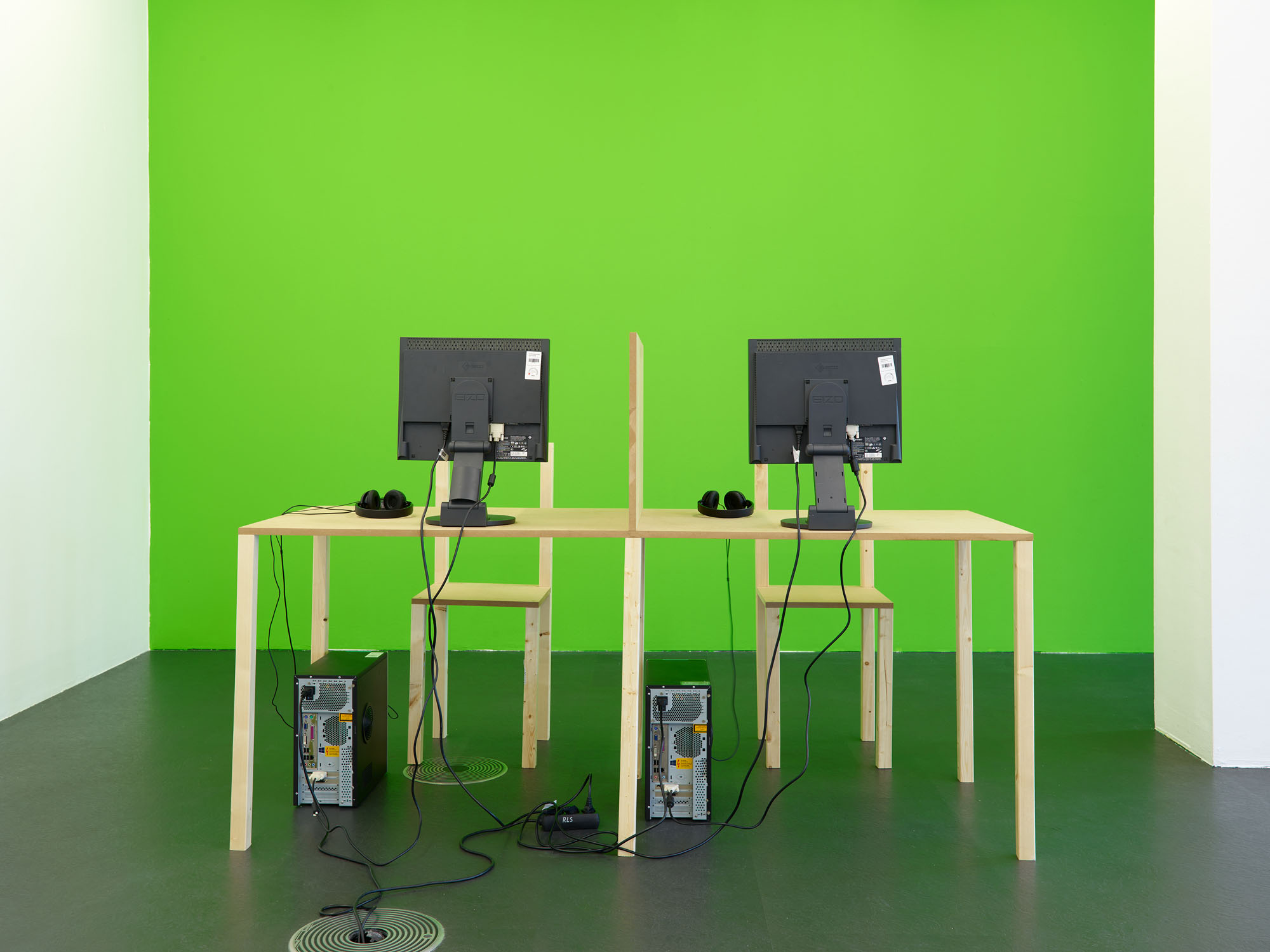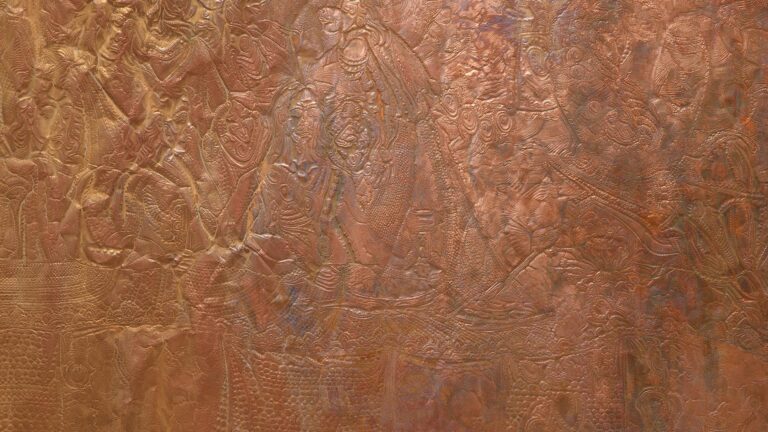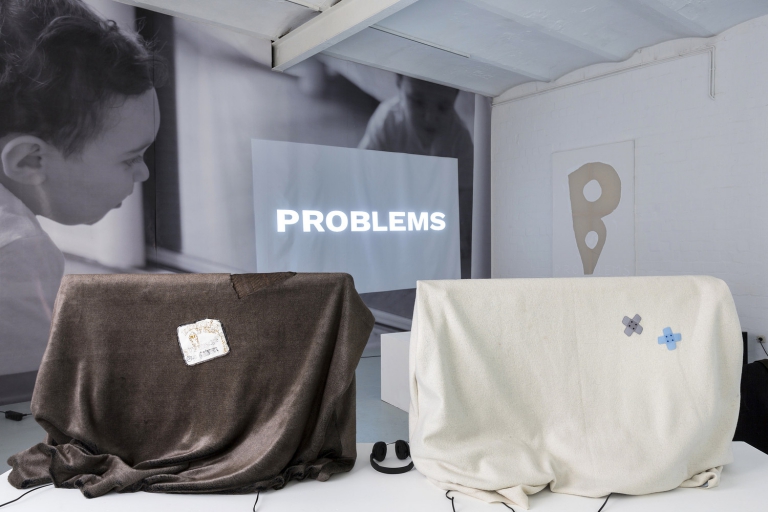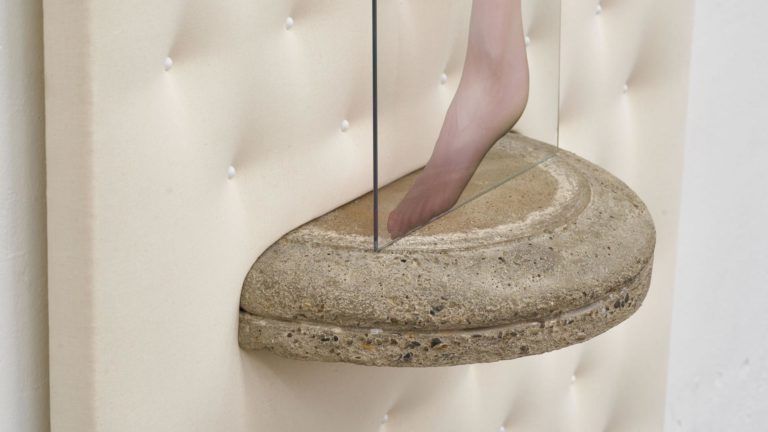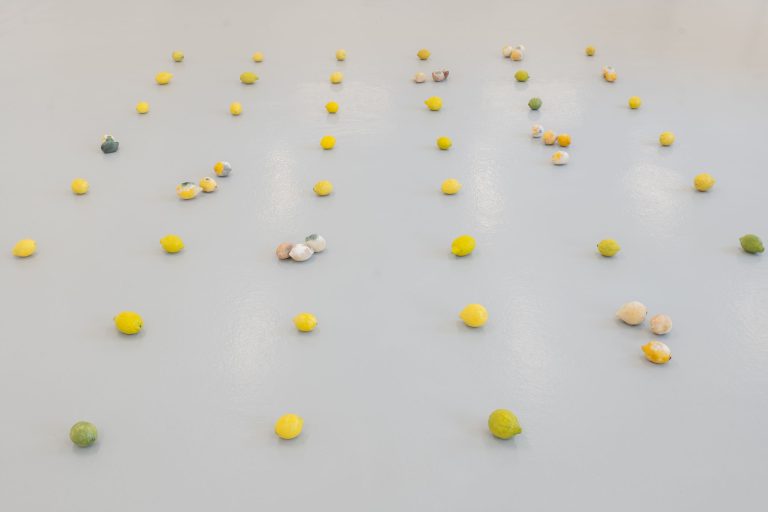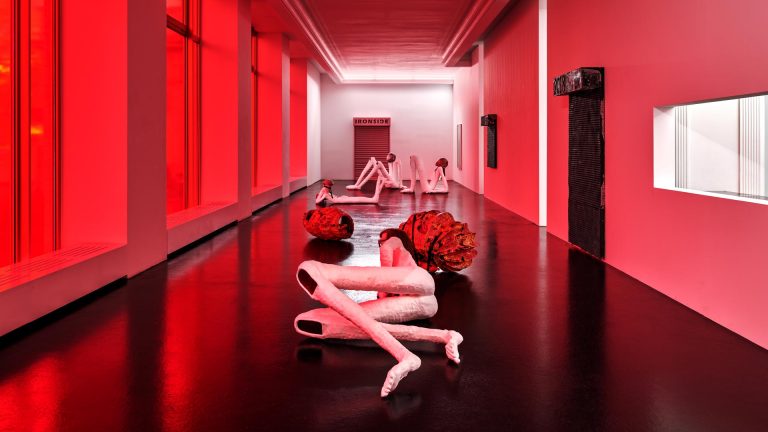Artist: Gijs Milius
Exhibition title: der Kampf der Kinder (the struggle of the children)
Curated by: Oriane Durand
Venue: Dortmunder Kunstverein, Dortmund, Germany
Date: September 6 – November 10, 2019
Photography: Simon Vogel / all images copyright and courtesy of the artists and Dortmunder Kunstverein
A scavenger hunt
Gijs Milius’s (*1985 in Utrecht, lives and works in Brussels) exhibition unfolds for the viewer like a game of hide-and-seek. At first glance, everything seems functional. A number of photos hang on the wall as if pages of a calendar. Behind a solid white archway that appears to be a permanent feature of the Kunstverein’s design sits an arrangement of simple office furniture, five computers and an architectural model. The walls are further adorned with a wall clock and two abstract pictures. This large exhibition space initially appears as a work space, but upon closer examination it becomes evident that no work is being performed here. Each of these elements, designed by Milius himself, bears witness to a very subtle play with the boundaries between fiction and reality: the small waiting area with a radio play in which the ‘struggle’ of the children is played out; the undated calendar pages composed from two overlapping prints; the arch leading to a digital parallel world; the wall clock, with its polystyrene arms, denying us the actual time; the musical pieces which can be listened to on one of the computers, mixed and arranged from hits of the 70s and 80s. Newly composed, they sometimes sound irritatingly nostalgic and seem somewhat like memories that have been compressed and jumbled over the course of years passed.
Illustrated via technical implements like timepieces and computers, tools invented by humans to work more efficiently, to ‘function better’, as it were, the exhibition recounts the children’s struggle. If the visitor takes the time to read, to listen, to watch and to play, a sense of nostalgia can emerge — a feeling of longing for something past and lacking, intensified by a discomfort with the present – and one might develop a wish to see the world in unbiased eyes. How can the imaginative freedom of childhood be preserved in a society that tends to dictate, organize and regulate life around the clock?
Undated calendar sheets; a dormant wall clock; a video game where one has to dodge falling clocks: the passing of time is reflected in several moments throughout the exhibition that ironically assert how rules and norms dictate life beyond childhood. Beware that you are not smashed by time — otherwise game over!
With a witty gaze on the world, and a keen sense of humor, Milius creates a digital environment with musical pieces, a video game and short videos that present themselves as if made during the nascent days of YouTube, picking up on those small technological distractions that today permeate our lives. Milius shoots, cuts and often assembles these pseudo-YouTube videos using his mobile phone (though not a smartphone) on location. Without context, depicting short and seemingly absurd actions and scenes of everyday life, the clips range from people cleaning streets, driving cars, or checking their mobile phones, to a cat playing with a piece of sausage — a pastime, the length of a cigarette.
Similar to what might occur when we check our phones at a traffic light or while waiting for a bus, we find moments in the show where different realities puncture our own or where a space for fiction develops. Take one example: in a pastel drawing hanging on a lizard green wall, a figure is depicted staring into a computer – neither child nor adult, they appear hypnotized by the screen, trapped in an endless loop of time.


